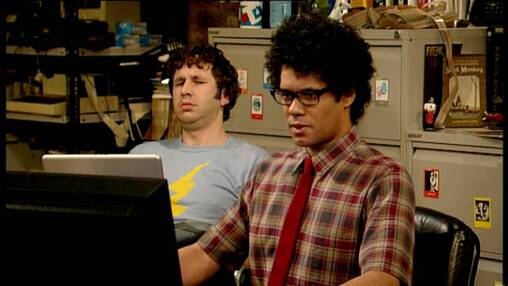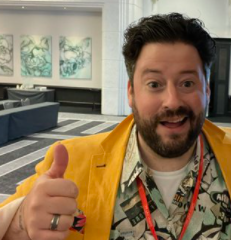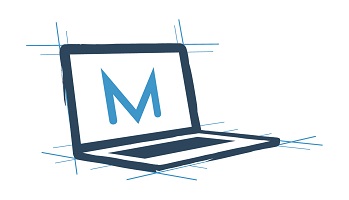Soft Skills are the New Tech Skills: Building a Skill Set to Excel in the Modern Workplace
This is my latest post on the challenges faced by IT pros in the Modern Workplace, where I examine how changes in technology and business impact Modern Endpoint Managers and other technical professionals. The first post in the series can be found here.

“Hello … IT. Have you tried turning it off and on again?” Roy and Maurice from the IT Crowd earned a special place in pop culture as the nerdy but lovable IT duo who personified a stereotype in the early 2000s.
It wasn’t that long ago that the information technology field, particularly systems engineering and administration, were dominated by the Roys and Maurices of the world. We never would have expected that Cosmo would run a column titled, “FYI, there are some pretty cool IT jobs out there.” Jobs that were once stereotyped as being the realm of unkempt, socially awkward guys working in dark, cluttered offices are now in-demand and sought after.
In the article, “How the IT Guy Became the ‘It Guy’: The Evolving Portrayal of Tech Professionals in Movies and Television,” Christina Wang discusses the changing image of IT pros in pop culture. She tracks the changing image from Dennis Nedry in Jurassic Park, to Roy and Maurice, and finally to Felicity Smoak in Arrow. In a lot of ways, this evolution mirrors reality. In the mid-90s the typical systems admin was expected to be a jack-of-all-trades with deep technical skills. IT teams were leaner, so deeply technical admins were regularly called upon for end user support – which led to confrontation and the stereotype of the IT guy as impatient and aloof, talking down to end users.
Roy and Maurice marked the first major evolution in the changing face of the IT pro. Throughout the series of the IT Crowd, we saw them being called to the president’s office and interacting with end users. They were looked at as advisors – not just technical assets. Roy was still a bit impatient with end users, but he worked to understand their needs and requirements. Maurice tried hard to fit in, even if he really didn’t understand the pop culture topics of the day. This first evolution tracked closely with the advent of Windows Server. Systems administration became more accessible to more people. While sysadmins were still expected to have deep technical skills, they could specialize more in different areas. End users became more knowledgeable, but many still had to call support frequently as the technology was not as stable nor easily accessible.
In 2008 the iPhone was released to great fanfare and the world was forever changed. Technology became ubiquitous. Nearly everyone had access to an unlimited amount of information and entertainment. Technology became more than just a tool for writing papers or producing content – but a mainstream source of entertainment, a tool to connect a more mobile workforce, and a source of unmatched collaboration. Cloud computing exploded. SaaS solutions became the norm. What was once seen as nerdy or on the fringe quickly became cool. Our career field, once thought of as being ideal for workers with poor people skills, was suddenly one of the most in-demand and quickly-growing career options.
With that came the next evolution in the IT field. Felicity Smoak in Arrow looks nothing like the once stereotypical IT worker, and there’s a reason for that. She’s more than just a made-for-TV face. She represents the changing IT workforce. Information Technology has become a more diverse, more exciting, and more mainstream career option. New workers entering their workforce are considering IT as a first option. We are attracting more dynamic employees who understand today’s technology and can articulate it to our increasingly technical user base. So, what does any of this have to do with technical skills? Why does a change in the workforce necessitate change on our part? Why should any of this mean we should have to change?
Thoughts on adding motivational content into a talk?
— Gregor Suttie @ #MSIgniteTheTour London (@gregor_suttie) January 14, 2020
I followed a recent Twitter thread where the original poster, Gregor Suttie, asked people for, “Thoughts on adding motivational content into a talk?” I responded with an enthusiastic yes. You never know who you may inspire and what could come from speaking up. I was ultimately given the mental boost I needed to start blogging because Chris Thomas (@AutomateMyStuff) included some slides on Impostor Syndrome. He didn’t see it as motivational, but it made a difference for me.
Other respondents had mixed feelings – ranging from ambivalent to believing that motivational content doesn’t belong in a technical presentation. I began to think about Gregor’s question and the responses more. I can certainly understand the argument that people are coming for deeply technical content – but does that mean that motivational content doesn’t belong? Are soft skills in general something that should be avoided at conferences or in presentations? Or – perhaps – should we start to consider soft skills as being technical skills?
If you look around the room at most user’s groups or in any technical presentation you will generally see a wide range of people. There are consummate professionals who look ready for the board room and other people who fit the “standard IT guy” trope. Nearly everyone who is attending a conference or technical discussion already has deep technical skills and are there to learn about new technology or how someone else accomplished a technical challenge. There’s no doubt that we, as IT pros, strongly value hard technical skills.
But what does that mean in the modern workplace? What does that mean in a changing workforce?
Twenty years ago, IT pros were called upon to deploy highly technical solutions that required a high level of IT department interaction to deploy to end users. The solutions were complex and difficult to understand. There weren’t a lot of enterprise management tools available. Systems administrators had to rely on complex logon scripts, group policies, and physical interaction with systems to manage them. Software upgrades and deployments were invasive and deeply technical, requiring long hours and weekends to complete. Every change was potentially high-risk and had a chance of halting production. We had to rely on deep technical skills to minimize disruption and support our end users.
Now most of our solutions are service based. More and more of our critical infrastructure is moving out of our on-premise datacenters and into cloud sources. Maintenance windows are slowly going away. System administration is becoming less complex even though the solutions we are deploying and managing are more complex than we could have imagined just two decades ago. When I worked at Plante Moran, our CIO, Paul Blowers, once shared that he believed that modern systems administrators will be relationship managers between business units and vendors. They will be called upon to relay and translate information and the need to use deep technical skills will be limited. Systems administration is now more about keeping up with trends and changing business needs than it is about building complex solutions.
Our end users are more technical – support calls are becoming less frequent and most problems can be solved by level one technicians with basic troubleshooting. Organizations are looking for us to provide solutions that match the tools in their daily lives. They want flexibility, mobility, and ease of use. Users understand the basic technology and want to be talked to as equals. When they see our modern-day counterparts on pop culture, they see engaging, well-spoken professionals who provide solutions, not roadblocks. We are no longer expected to dwell in shadowy corners and avoid eye contact – we are being asked to partner with our organizations and provide real, relevant, modern solutions.
In a recent Twitter skills chat documented by Rob Shook on the IBM Training and Skill blog, IBM asked 5 questions to spark a discussion on skills needed in the modern workplace. The tweets in the original article were provided without context, links or attribution, but they offer a lot of insight into how soft skills are viewed in the modern workplace. Some of the highlights included:
“How are skills needs changing in the workforce?”
- “The skills needed in today’s world are changing in a lot of ways. I’ve realized employers are stressing EQ over IQ, and are stressing the importance of having a few skills that you’re really, really good at.”
“Name the top skills needed in the workforce?”
- “The number one skill needed in the workforce is the ability to communicate effectively and build strong relationships in order to create powerful team dynamics.”
“How do you define soft skills?”
- “Soft skills are interpersonal (people) skills. These are much harder to define and evaluate but are critical for success given today’s workforce challenges.”
“Why are soft skills needed in IT?”
- “Soft skills are essential for driving successful business and user outcomes. As an HR professional, we often see soft skills over technical skills as the reason a manager chooses to hire or promote talent.”
“What are the best ways to build soft skills?”
- “There are many ways to learn about soft skills whether its reading books, TED Talks, or attending workshops, but the best way to build soft skills is to practice them. Openly and rigorously practicing soft skills are the best way to implement and build them.”
Our organizations are looking for Information Technology to partner with the business to provide solutions and build a more dynamic future. Most of us have worked at organizations where IT departments have had an adversarial relationship with the business. We have been a part of teams or worked with individuals where prevailing culture was that end users don’t get it. In these situations, it becomes culturally impossible for IT to listen first and provide workable solutions to our businesses.
In my first post on the modern workplace, I established a need to be a partner to our organizations and empower end users. Our organizations are hungry for solutions-centric IT partners. They will look towards providers who can listen and meet their needs. This means we need to develop soft skills like listening, communication, and being lifelong learners. It also means we need to continue to develop our technical skills to understand and provide modern solutions. We cannot fall back on old tropes and be effective in the modern workplace. We must be dynamic, growth-oriented professionals. The changing face of technology requires that we continue to be evolve. Considering all of this I believe that we should start treating soft skills as technical skills. If we want to be solutions providers and preserve our place in the workforce, we should be working to build each other up. This may mean adding a few motivational slides to a presentation, engaging each other in conversation, or looking for ways to foster a growth mindset among our peers.

